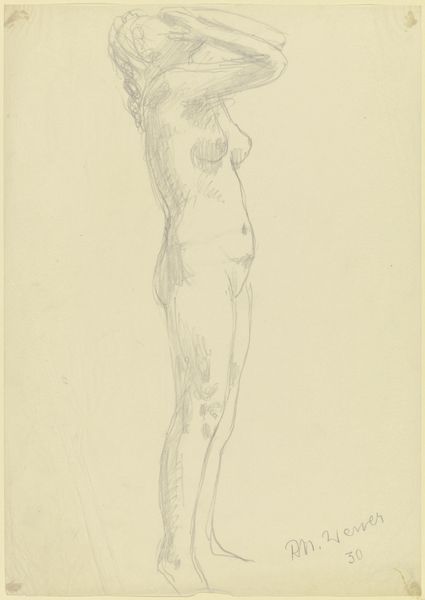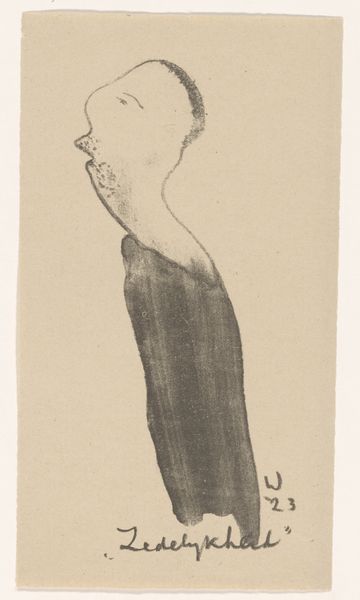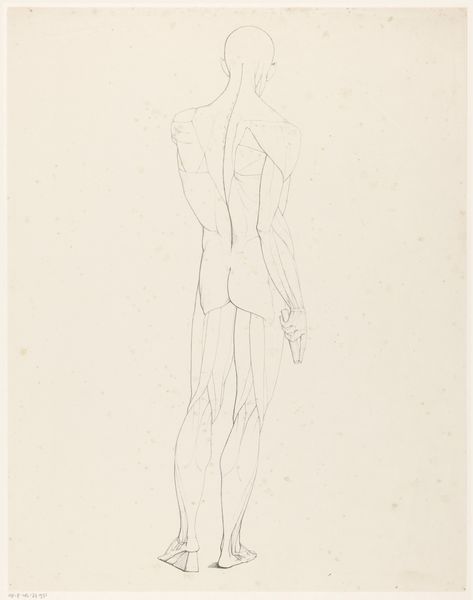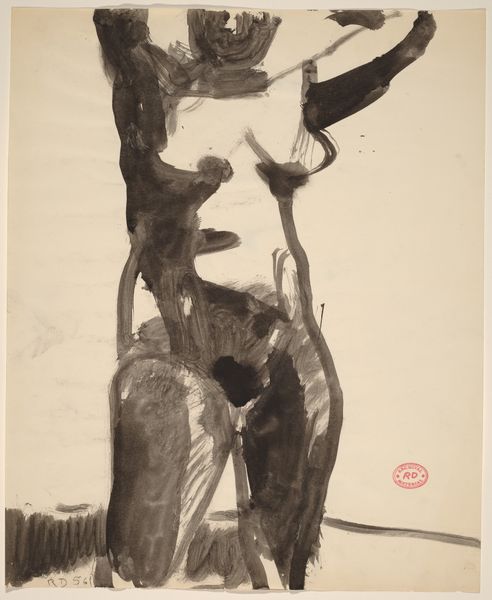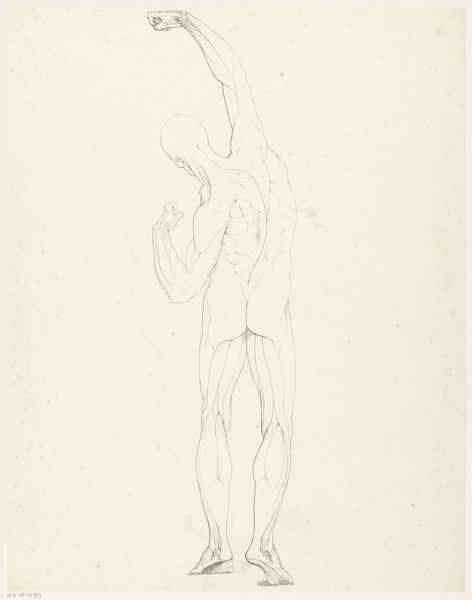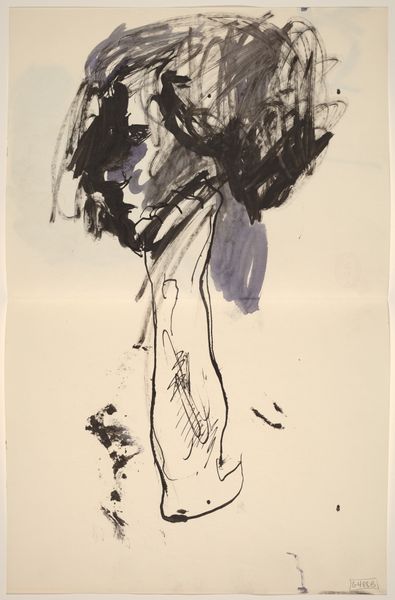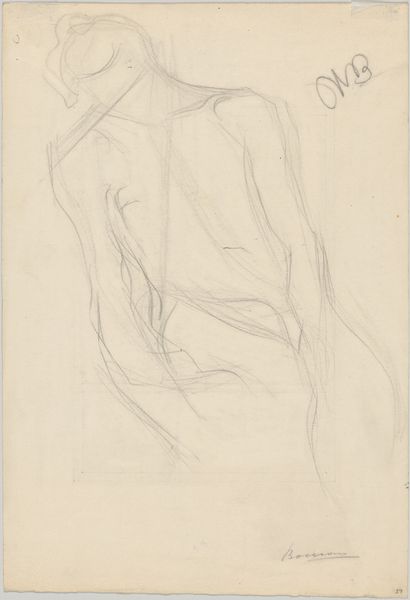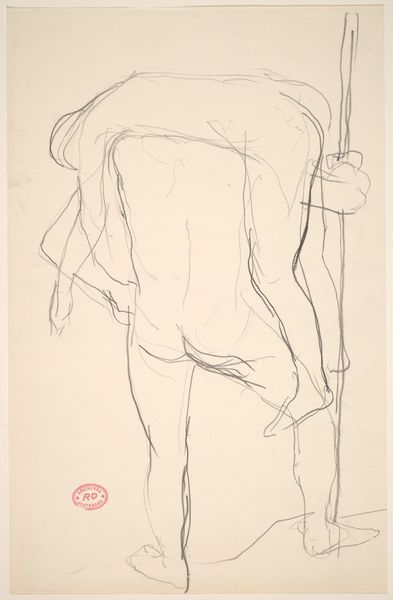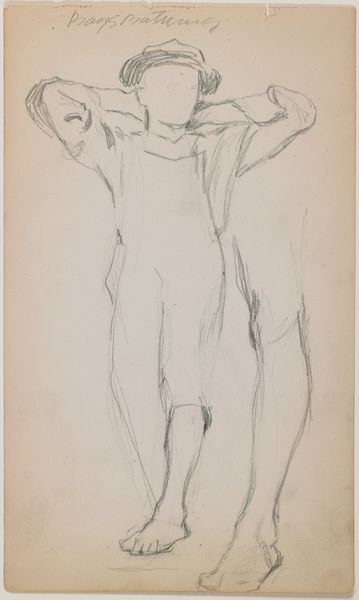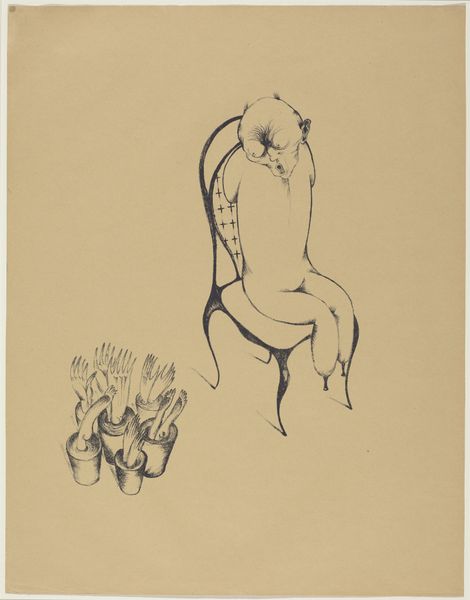
drawing, pencil
#
portrait
#
drawing
#
imaginative character sketch
#
light pencil work
#
ink drawing
#
pen sketch
#
landscape
#
classical-realism
#
figuration
#
personal sketchbook
#
ink drawing experimentation
#
pen-ink sketch
#
pencil
#
symbolism
#
sketchbook drawing
#
sketchbook art
#
fantasy sketch
Dimensions: 219 mm (height) x 176 mm (width) (bladmaal)
Curator: This pencil drawing, titled "Atlas," comes to us from the Danish artist Karl Isakson. He rendered it around 1907 or 1908. It's currently part of the collection here at the SMK. Editor: My immediate impression is one of tremendous strain, almost existential fatigue. The figure is so slender, and the burden, represented by this shadowed sphere, looks impossibly heavy. Curator: The image evokes the mythological Atlas, condemned to hold up the celestial spheres for eternity. Considering Isakson's ties to symbolism, it is worth to highlight how this imagery connects to the art community and larger debates on burdens of representation at the turn of the century. Editor: It does make one ponder the symbols here: a burden, or duty, the sheer pressure and also our own expectations that we might have of other's labour. And while the mythological Atlas suggests cosmic consequences, here there is a sense of human vulnerability in those lines and sketchy unfinished rendering. Curator: Exactly, and in its time, such representation of human form pushed away from idealized portrayals. The institutional embrace of raw, vulnerable representations challenges previous academic standards and makes space for introspection and even empathy, don't you think? Editor: Most certainly. It opens questions concerning public and private experience; also this piece feels incomplete and raw in its artistic interpretation. Does that further question our idea of perfection or maybe the constant feeling of being in a permanent state of work? Curator: Interesting points! What I value most about the work of Karl Isakson is the role of institutions in determining standards and in embracing changes of aesthetics, technique or medium that resonate within particular communities of practitioners and critics. Editor: And from an iconographic perspective, "Atlas" becomes a mirror, reflecting our collective anxieties back at us. Each era projects its worries onto these ancient symbols, shaping their meaning anew. Curator: Indeed, it also offers an opening for critical discussion regarding aesthetic expression that reflects social and political issues. The act of displaying an artwork such as this promotes conversations of both an intellectual and civic scope. Editor: A humble drawing on the surface, perhaps. But once it digs in, it carries a depth of cultural memory and individual psychology that just endures, like poor Atlas here.
Comments
No comments
Be the first to comment and join the conversation on the ultimate creative platform.
